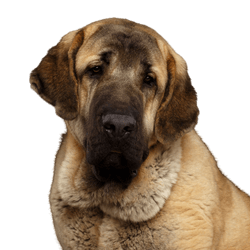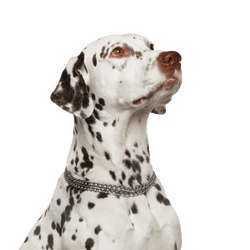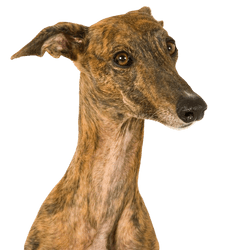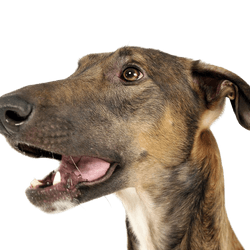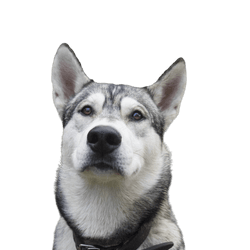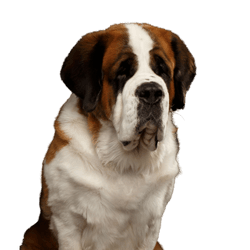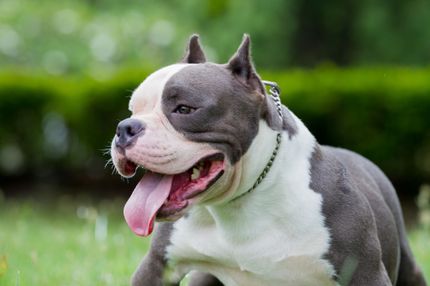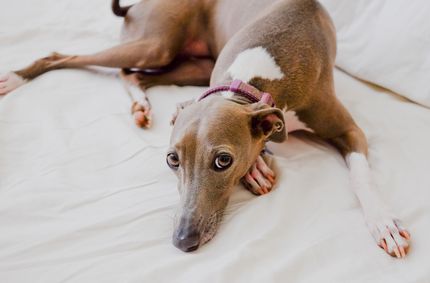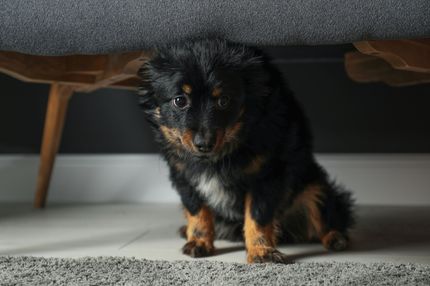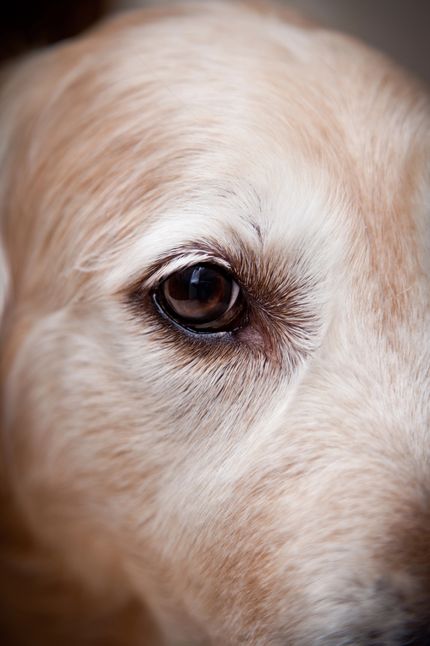Facts & Origin
Origin and history
The Russian-European Laika is a Russian hunting dog breed originating from the northern forest regions of Russia between Finland and the Ural Mountains. The first descriptions of these stand-eared dogs were published in 1895 by A.A. Shirinsky-Shikhmatov in the "Album of Northern Sled Dogs-Laikas". There they were referred to as Cheremis and Zyrianskiy-Laikas.
Originally, these dogs only existed in certain regions of Russia (including Komi, Udmurtia, Arkhangelsk, Yaroslavl, Tyver and Moscow). In 1947, various Laika lines, including those from Arkhangelsk, Komi, Karelia and Votiatsk, were brought together under the modern name Russian-European Laika. The breed standard was officially recognized in 1952.
Difference from other breeds
This breed is considered the smallest of the three Laika types and is used as a versatile hunting dog for both large and small game. Originally, it was mainly used for squirrel hunting. It is similar in appearance to the Karelian Bear Dog, but is smaller, lighter in build and more compact. The typical breed type was not achieved through crossbreeding with other Laika lines, but through targeted selection over a long period of time.
The Russian-European Laika as a hunting dog
Its pronounced hunting instinct and excellent sense of direction make it an extremely efficient hunting and tracking dog. It is particularly adept at tracking and locating game, such as squirrels or martens, which it alerts by barking loudly. In addition to small game, it is also used to hunt large game such as bears and moose.
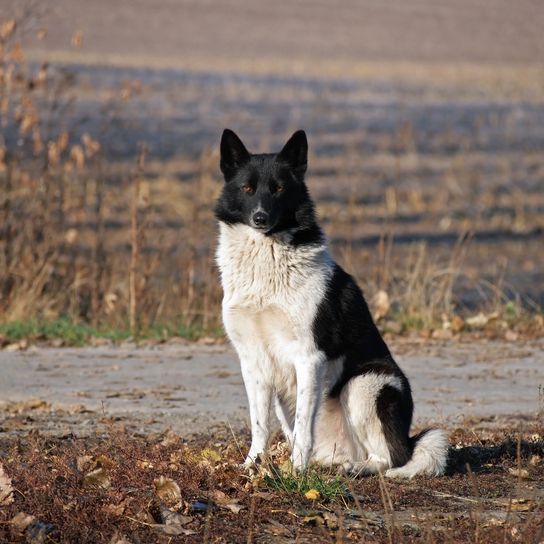
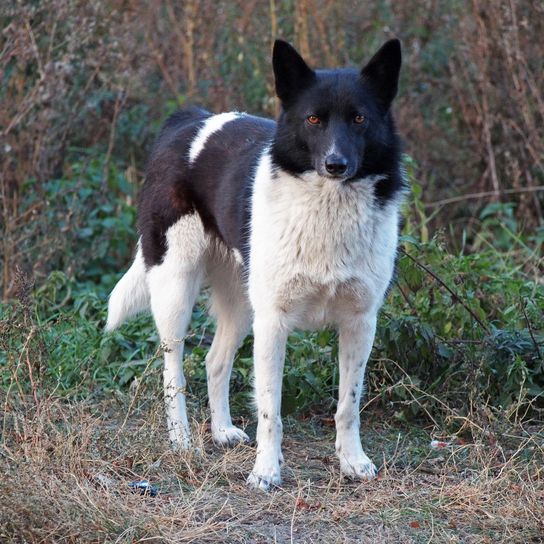
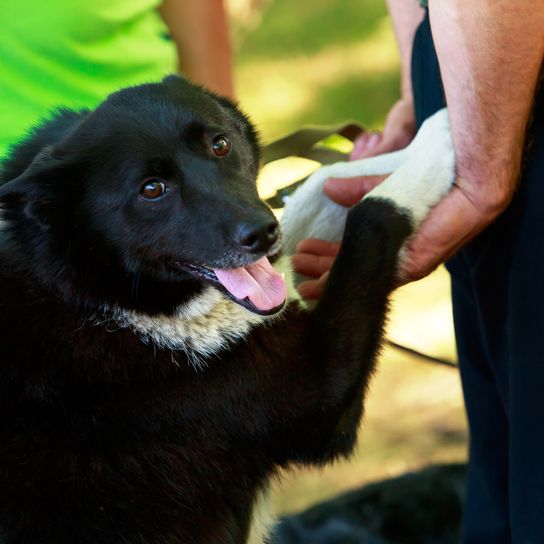
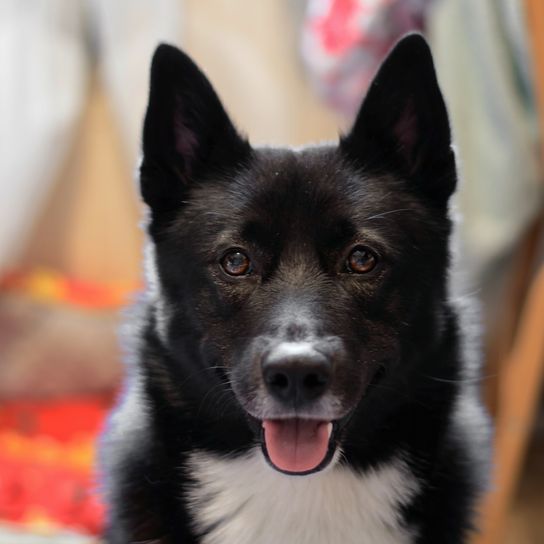
| Alternate Name | Russko-Evropeïskaïa Laïka |
| Origin | Russia |
| Life expectancy | 12 - 15 years |
| Care requirements | high-maintenance |
| Activity level | average to high |
| FCI group | Nordic Hunting Dogs |
| AKC group | not recognised |
| KC group | not recognised |
Attitude, character and temperament of the breed
Basic character traits
The character of the Russian-European Laika is calm, balanced and characterized by an excellent sense of smell, which makes it a versatile scenting and hunting dog.
Dealing with family and strangers
The Russian-European Laika is a friendly, affectionate and loyal dog that is particularly tolerant of children. At the same time, it has strong territorial behavior and can react defensively or aggressively towards strange dogs that enter its territory.
Stimulation and training
Thanks to its intelligence, the Russian-European Laika is easy to train, but needs an owner who shows consistency and patience. This dog also needs a lot of exercise and mental stimulation.
Early and consistent training is recommended to avoid unwanted behavior.

Grooming
The coat of the Russian-European Laika is dense and weather-resistant. Here are some tips for grooming:
- Regular brushing: It is recommended to brush the coat at least once a week to prevent matting and remove dead hair.
- Bathing: The Laika should only be bathed when necessary. Its coat has natural oils that can be lost if it is bathed too often.
- Ears and teeth: Regular checks and cleanings are important to prevent infections.
Health
As with many breeds, there are certain health concerns that can arise with Laikas: Some Laikas can be prone to hip dysplasia . Regular examinations can help detect them early. Eye exams should also be performed regularly, as the breed may be predisposed to some eye problems.
Regular visits to the vet and a balanced diet are key components to ensuring the Laika's health.
Breeding
Breeding the Russian-European Laika should be done responsibly and with a deep understanding of the breed.
- Genetic testing: This can help minimize known health problems in the breed.
- Socialization: Early socialization of puppies is crucial to ensure they are well adjusted and sociable.
- Selection of breeding pairs: Emphasis should be placed on a healthy pedigree and good character traits.

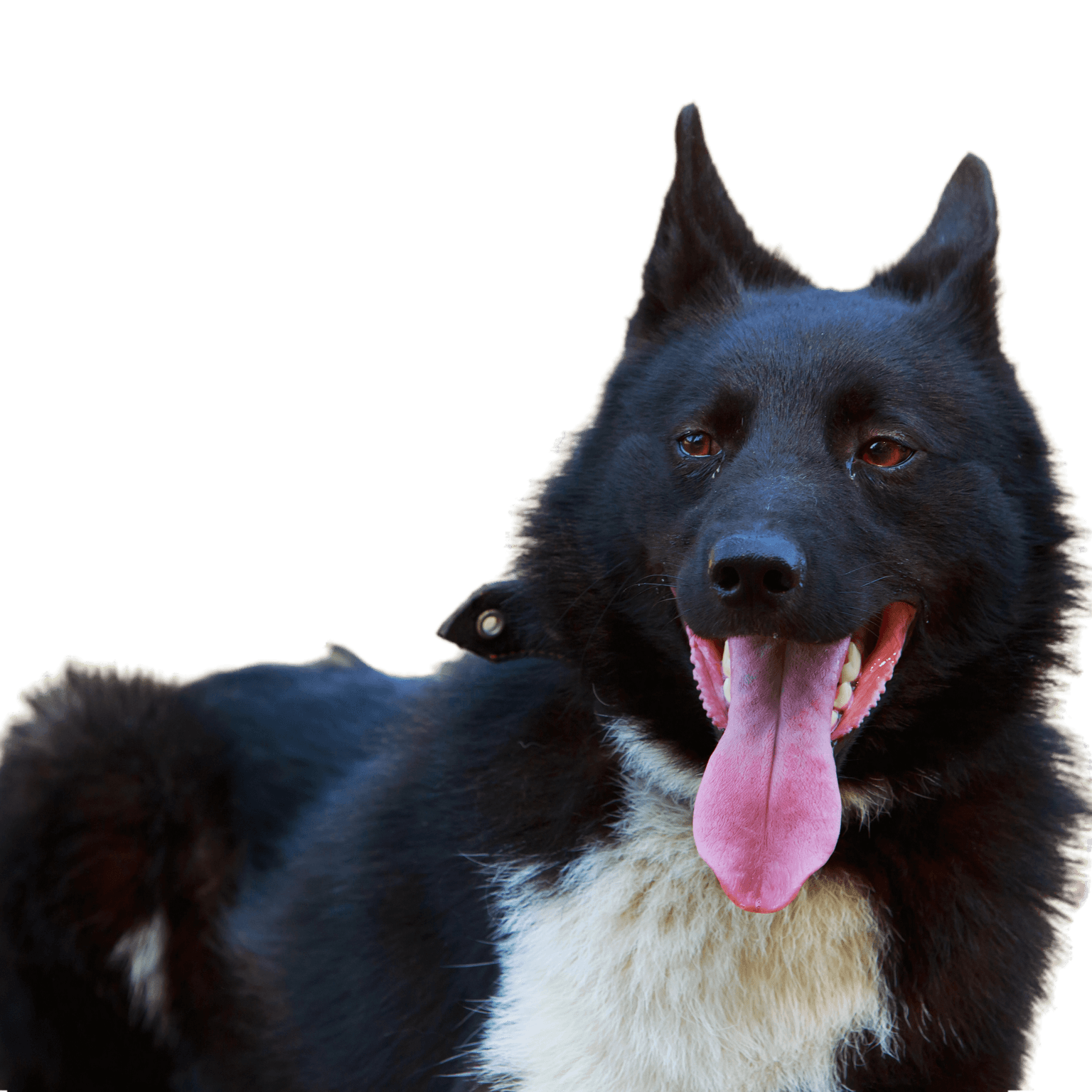
Appearance
The Russian-European Laika is a medium-sized, strong hunting dog with a square build and well-developed muscles. Males appear more compact, while females are usually slightly longer.
The head
The head is dry and wedge-shaped, with a well-developed skull and a slightly pronounced stop. The nose is always black, regardless of coat color. The muzzle is dry, pointed and slightly shorter than the skull, with the topline running parallel to the line of the head. Lips are close fitting, the dentition is complete with strong teeth, preferably scissor bite. The eyes are oval, slightly slanted and vary between dark brown and brown, matching the coat color. High-set, pointed pricked ears give the dog its alert expression.
The body
The neck is slender, muscular and corresponds to the length of the head. The topline is strong, the withers particularly pronounced in males. The chest reaches deep to the elbows and is oval in cross-section. The loins are short and well muscled, the croup is slightly sloping. The belly line is moderately tucked up. The tail is carried as a sickle or curled tail and touches the back, thighs or buttocks when at rest.
The limbs
The limbs are straight, well muscled and strong. The paws are oval, well arched and have tight-fitting toes. The gait is free and powerful with good ground coverage.
The coat
The dense coat consists of hard, straight guard hair with a soft undercoat. It is longer on the neck, shoulders and cheekbones and forms a collar and side-whiskers, with pronounced pants on the hind legs. The tail is profusely coated, but without feathering. Typical coat colors are black with white, white with black and, more rarely, all black or all white.
Size
With a height at the withers of 52-58 cm (males) and 48-54 cm (females), the Russian-European Laika is compact, agile and robust. Its pronounced hunting instinct and alertness make it a reliable companion for experienced owners.
| Fur length | medium |
| Fur | - |
| Ear shape | Standing Ears |
| Tail | lang |
| Anatomy | rugged |
| Size ♀ | 48 - 54 cm |
| Weight ♀ | 23 - 25 kg |
| Size ♂ | 52 - 58 cm |
| Weight ♂ | 24 - 27 kg |
| Suitable For | - |



FAQ
-
The Russian-European Laika originates from the northern regions of Russia between Finland and the Ural Mountains. It was originally used for hunting small and large game.
-
Males reach a height at the withers of 52-58 cm, bitches are slightly smaller at 48-54 cm. Their weight varies depending on their stature, but is usually between 20 and 30 kg.
-
This breed has an average life expectancy of 12 to 15 years, but with good care and health it can live longer.
-
Yes, but only under certain conditions. He is loyal, friendly and loves children, but requires clear leadership and plenty of activity. Without sufficient exercise, he can be headstrong and difficult to control.
-
He can be socialized with other dogs, but often shows strong territorial behaviour and can react aggressively to other dogs in his territory. Early socialization is therefore important.
-
Very strong! The Russian-European Laika was specially bred to hunt squirrels, martens, bears and moose. Its hunting instinct is deeply rooted, which is why it should not be left off the lead in unsecured areas.
-
He is intelligent, but also independent and strong-willed. A consistent, experienced hand is needed to set him clear boundaries. Positive reinforcement and patience are essential.



